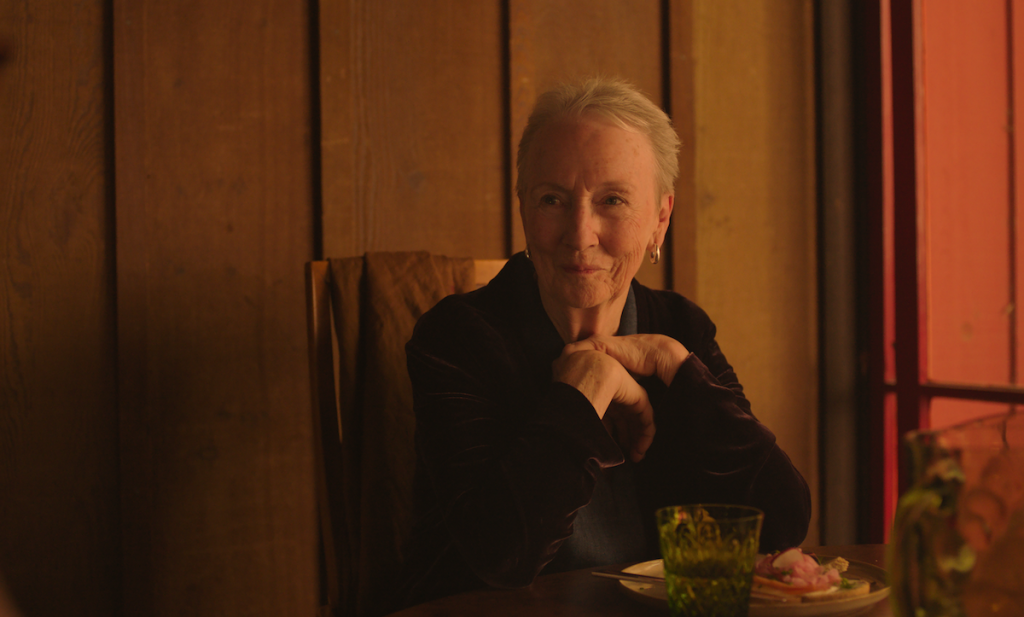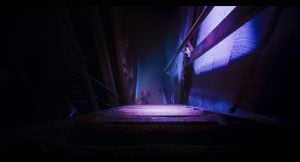For all of us thinking humans, cognitive decline and dementia can be seen as a specter, something from our worst nightmares. In many ways, art has not helped this fear. There are numerous stories about this, and few of them are steeped in reality. Even fewer of them center the individuals going through the process, instead showing how it affects their friends and family. That is not to say that these stories are uninteresting or not worthwhile. Even in the exceptions, many of these movies are overdramatized for the pleasure of the audience and tend to lack realism. But it is the rare film that puts the focus on the one going through this change. Familiar Touch is just that rare film.
Familiar Touch opens without the knowledge of the decline in question. Ruth (Kathleen Chalfant) is in her home, making lunch for herself and a soon-to-be-arriving visitor. When Steve (H. Jon Benjamin) arrives, the audience is left to discover the source of their relationship. As the scene unfolds, through confusing physical touch and calm, but trembling voices, director (and writer) Sarah Friedland allows this relationship room to breathe. And this is a continued theme noticeable throughout; there are no quick cuts, no flashy camera tricks. Friedland forces us to stay present, in the body and mind of Ruth. Other characters may come and go, but there is no confusion as to whose story is being told.
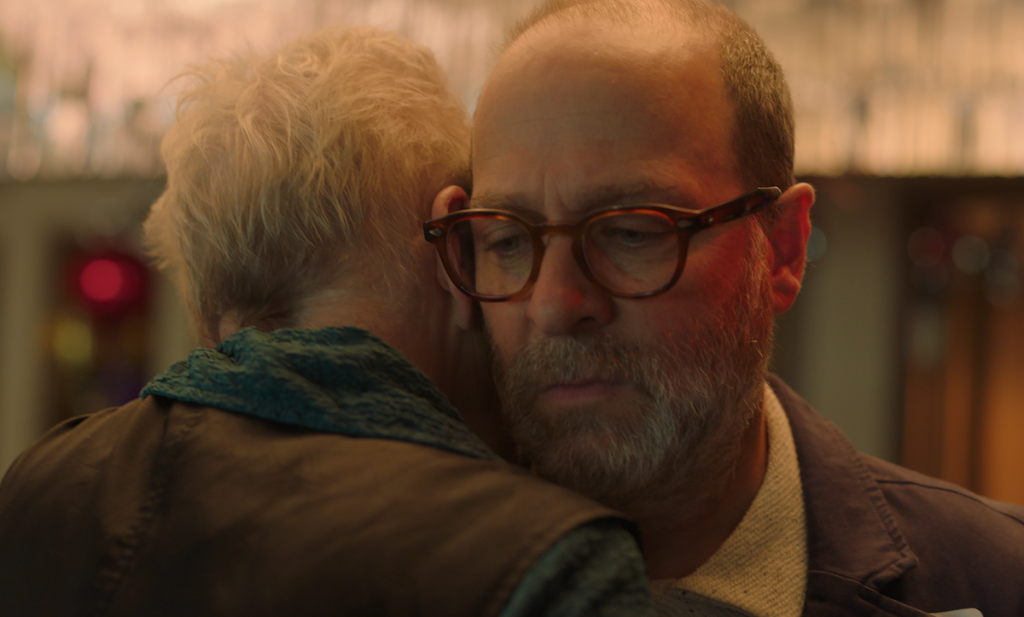
After it is revealed that Steve is her son, we accompany the two of them to an assisted living facility where Ruth will be staying from now on. The scene in which Steve and Ruth part is particularly painful, as her memory of who he is slips away for the time being. As he exits and tries to hide his emotions, we cannot help but feel for both people; one struggling with transition and the other losing connection with his own mother. The film is full of moments like this, but never falls into melodrama. The focus on the genuine reality of Ruth, though changing from moment-to-moment, is what keeps the audience locked on to her experience.
Importantly, the performance from Kathleen Chalfant is note-perfect. The script, from Friedland, aids her, as it reveals just enough to move forward. But it is not an overwritten part. Chalfant’s ability to communicate with her body language and facial expression, likely honed from decades of experience on the stage, has the dramatic impact of managing to keep us on the edge of our seats, even if the film is not exactly action-packed. Additionally, Friedland’s decision to keep her camera (helmed by cinematography from Gabe C. Elder) framed tightly on Ruth, though uncomfortable, is rewarding in the long run. The audience may even find themselves wanting to push Ruth into action, which forces us to remember that she is struggling through the same efforts. This embrace of empathy is one that can be a moment of growth, even sitting at home, watching a fictional character work through this transition.
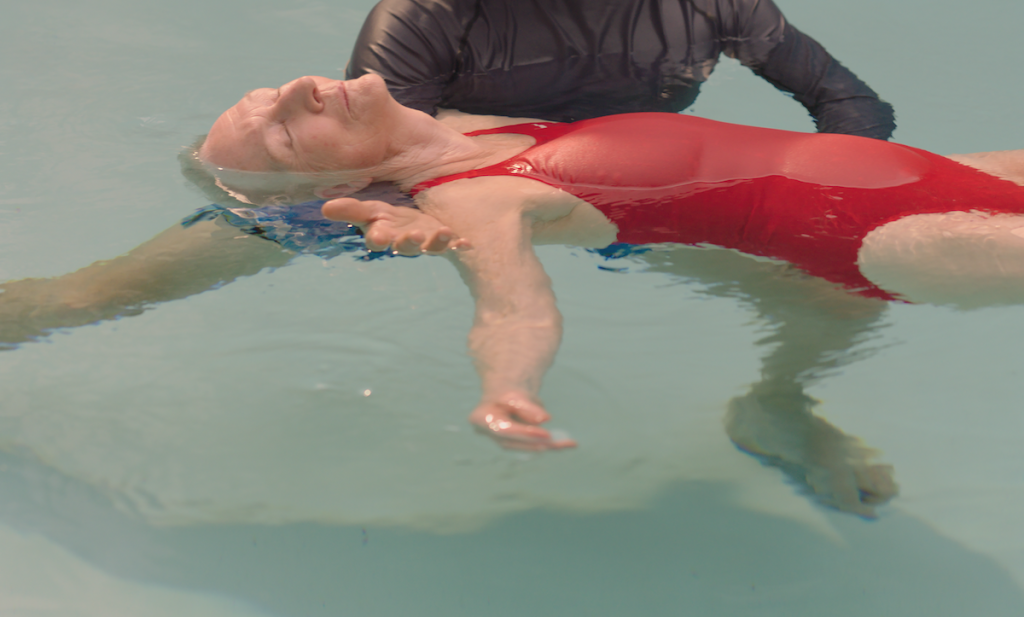
Friedland also plays with the idea of memory and the connections our brains make, without ever using a blunt approach. Watching Ruth float in a pool, again in extremely tight focus, allows the sound designer, Eli Cohn, to work in concert with that camerawork and Chalfant’s performance. This creates a moment of memory, without ever leaving the present. The sounds of a beach scene allow us, in our own minds, to be transported to Ruth’s fading memories. There are no changing visuals, the film demands that we fill in those blanks. There are no wrong answers. Everything is translated through Ruth’s beatific smile as she drifts, both physically and emotionally.
As we move with Ruth through her relationships, both new and old, we understand everything about her. Her joys, her frustrations, her desires; all of these experiences, old, new, or somewhere in between are real. Despite this, the film never lets you off the hook emotionally. Ruth’s tribulations always return, and Friedland understands the power of where she ends her film. One scene prior and the effect could not be more different. There is not a misstep to be found, even though it is this director’s first feature. Despite the obvious low budget, Familiar Touch never feels like it is cutting corners.
This film tells an important story, rarely told. Yes, dementia and cognitive decline is often used to tell stories of heightened drama, comedy, and familial strife. Rarely are these stories told purely from a lens of empathy and one person’s journey into a new, ever-changing reality. The power of a beautiful story, simply told, with love has rarely been more present than in Familiar Touch.
Familiar Touch is currently available on VOD courtesy of Music Box Films.
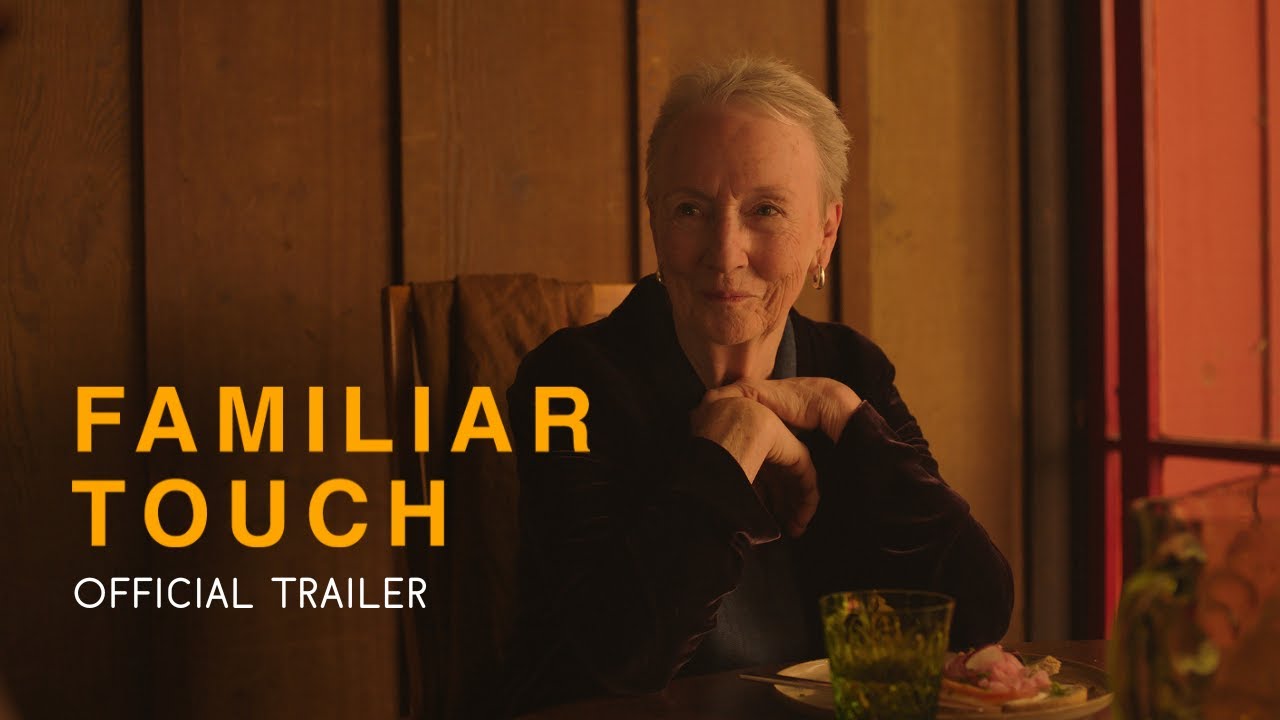
This film tells an important story, rarely told. Yes, dementia and cognitive decline is often used to tell stories of heightened drama, comedy, and familial strife. Rarely are these stories told purely from a lens of empathy and one person’s journey into a new, ever-changing reality. The power of a beautiful story, simply told, with love has rarely been more present than in Familiar Touch.
-
GVN Rating 9.5
-
User Ratings (0 Votes)
0
Dave is a lifelong film fan who really got his start in the independent film heyday of the 90’s. Since then, he has tried to branch out into arthouse, international, and avant garde film. Despite that, he still enjoys a good romcom or action movie. His goal is to always expand his horizons, through writing and watching new movies.


